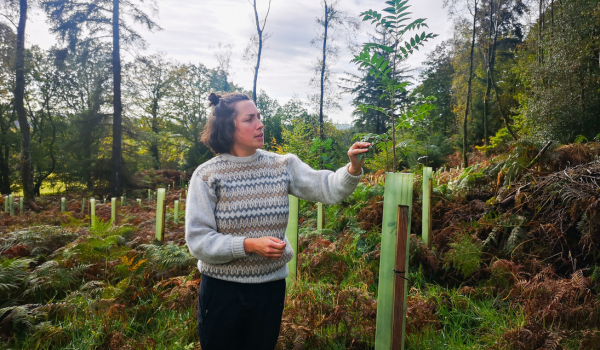
29 November 2023
I have worked for the Lake District National Park for nearly four years, but I’ve been working with trees for eight years with other authorities including New Forest National Park.
My role at the National Park can be split in to two parts:
My favourite tree is probably an Oak tree. They are icons of the British Isles and they support lots of really cool species such as insects, birds and other wildlife. They can grow to be very gnarly, old trees which are impressive to look at and admire.
Trees are really important to me as part of the landscapes in which we live in. My role allows me to have an active impact on protecting and keeping new generations of trees coming through to maintain tree cover long term in the places we live and visit. Trees play a huge part in what makes the Lake District so special and with climate change, we really need to be mindful on protecting our trees and their features, as well as planting new trees.
We have a good level of tree and woodland cover, which keeps me busy. Examples of jobs are:
The Lake District National Park Authority own around 4 per cent of the total amount of woodland there is. We have a real mixture dispersed across the Park. Some are very old and designated as Ancient Semi Natural Woodlands, some are Atlantic Rainforest which is very rare and some are younger and offer us huge potential for nature recovery and carbon storage.
The largest woodland we own is called Haverthwaite Heights, this is a great bit of woodland with great trails to explore. It also contains lots of archaeological features which hark back to traditional management methods and local industry. In 2021 we had devastating news that our Larch trees were infected with Phytophthora ramorum and we had to clear a huge area of woodland. With the help with funding from Forestry Commission we have planted various new trees including Oak, Birch and Rowan, amongst others. The timber was taken to Carlisle timber yard to be processed and made into all sorts of wood products such as constructions materials and pallets.
My favourite woodland to visit is our Glass Knott Woods. I like coming here because it feels old and historic, you get the sense of what life was there hundreds of years ago. It also contains the tallest Small Leaved Lime tree on record.
We want to maintain the benefits that trees and woodlands offer. As Trees and Woodland Officer I can create Tree Preservation Orders, ensure suitable management is being undertaken on protected trees and ensure our woodlands are managed in a holistic way to try and minimise harm to our trees and woodlands but it’d be great if the public could help too.
Please report illegal tree work so we can investigate and take suitable action, we have brought two successful tree prosecutions this year. Also keep an eye out for harmful tree pests and diseases so we can stop their spread. A list of notifiable pests and diseases can be found on the Forestry Commission website and an action as simple as cleaning boots/dog paws/bike tyres when you leave woodlands and before entering another can contribute greatly to keep our tree and woodland populations healthy.
If you notice tree works you can check their legitimacy by checking the protected status of those trees using our interactive tree map. You can also see if the works are consented using the planning application search tool. Both items are available on our website.
If you see works to protected trees or woodlands that doesn’t have consent or is harmful to public amenity value, then please report to [email protected] as soon as possible.